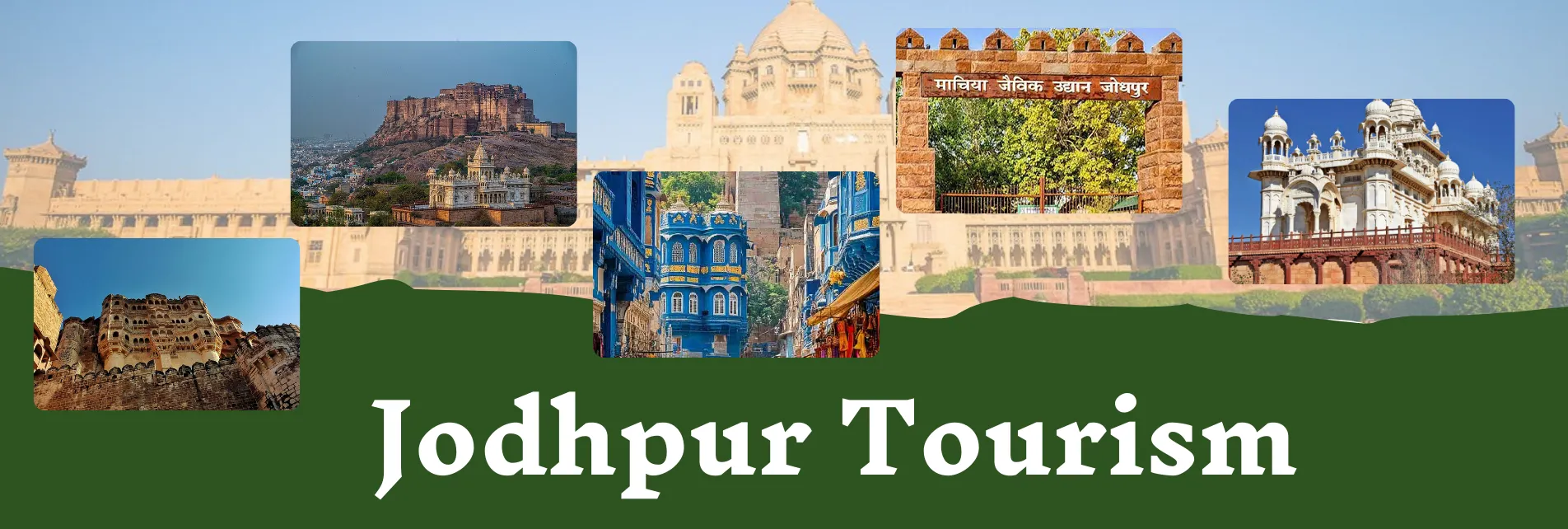
Best Time to Visit Jodhpur
Witness the unique shades of blue in the architecturally rich city of Rajasthan
Best Time to Visit Jodhpur: Your Guide to Perfect Weather & Festivals
Jodhpur, the captivating Blue City of Rajasthan, offers a unique blend of history, culture, and vibrant experiences. However, to truly appreciate its charm, timing is key. Knowing the best time to visit Jodhpur can significantly enhance your travel experience. Let’s explore the ideal seasons and festivals that make Jodhpur a year-round destination, with specific periods offering truly exceptional experiences.
Winter: October to March - The Peak Season
Winter is undoubtedly the most popular time to visit Jodhpur. From October to March, the weather is pleasantly cool and dry, making it perfect for sightseeing and outdoor activities. Daytime temperatures range from 15°C to 25°C (59°F to 77°F), while nights can be cooler, requiring light layers.
Why Visit in Winter?
- Ideal weather for exploring forts, markets, and gardens.
- Comfortable conditions for camel safaris and desert excursions.
- Perfect for attending cultural events and festivals.
Festivals During Winter:
- Marwar Festival (October/November): A vibrant celebration of music, dance, and traditional Rajasthani culture.
- Diwali (October/November): The festival of lights, which illuminates the city with dazzling displays.
Shoulder Season: September and April - Pleasant Alternatives
September and April offer a balance between comfortable weather and fewer crowds. While temperatures start to rise in April, and September is the end of the monsoon season, these months can still be good options for travelers seeking a quieter experience.
Why Visit in Shoulder Season?
- Fewer tourists, allowing for a more relaxed experience.
- Potentially lower prices for accommodations and tours.
- Pleasant weather for early morning and late afternoon activities.
Summer: April to June - Avoid the Heat
Summer in Jodhpur is characterized by intense heat, with temperatures soaring above 40°C (104°F). This period is generally not recommended for tourists, as the scorching weather can make sightseeing uncomfortable.
Why Avoid Summer?
- Extreme heat, making outdoor activities challenging.
- Potential for heatstroke and dehydration.
- Limited opportunities for comfortable exploration.
Monsoon: July to September - Lush Landscapes
The monsoon season in Jodhpur brings occasional rainfall, transforming the arid landscape into a lush green oasis. While the rain can disrupt outdoor activities, it also offers a unique perspective of the city.
Why Visit During Monsoon?
- Less crowded, offering a more intimate experience.
- Beautiful landscapes with greenery and refreshed scenery.
- Unique photo opportunities with dramatic skies.
Things to Consider:
- Rain can affect travel plans and outdoor activities.
- Humidity levels may be high.
Tips for Planning Your Trip:
- Book Accommodations in Advance: Especially during the peak season.
- Check Festival Dates: Plan your trip around specific festivals for a cultural experience.
- Pack Accordingly: Bring light clothing for daytime and layers for cooler evenings during winter.
- Stay Hydrated: Carry water and drink plenty of fluids, especially during warmer months.
- Use Reliable Transportation: TaxicabJodhpur.com offers comfortable and reliable taxi services for exploring the city.
Conclusion:
The best time to visit Jodhpur largely depends on your preferences and priorities. Winter offers ideal weather and vibrant festivals, while the shoulder season provides a quieter experience. By planning your trip according to the seasons and considering the festivals, you can make the most of your visit to the enchanting Blue City.
Frequently Asked Questions About the Best Time to Visit Jodhpur
What is the best time to visit Jodhpur?
The best time to visit Jodhpur is during the winter months, from October to March, when the weather is pleasant and ideal for sightseeing.
Are there any festivals during the best time to visit Jodhpur?
Yes, the winter months see vibrant festivals like the Marwar Festival (October/November) and Diwali (October/November), offering unique cultural experiences.
Is it advisable to visit Jodhpur during the summer months?
It's generally not advisable to visit Jodhpur during the summer months (April to June) due to the intense heat, with temperatures often exceeding 40°C (104°F).
What are the shoulder seasons in Jodhpur?
The shoulder seasons in Jodhpur are September and April, offering a balance between pleasant weather and fewer crowds.
What should I pack when visiting Jodhpur during the winter?
Pack light clothing for daytime and layers for cooler evenings during the winter months in Jodhpur.
Is it possible to visit Jodhpur during the monsoon season?
Yes, you can visit Jodhpur during the monsoon season (July to September). While there may be occasional rainfall, the landscape becomes lush and green, offering unique photo opportunities. However, be prepared for potential disruptions to outdoor activities.
